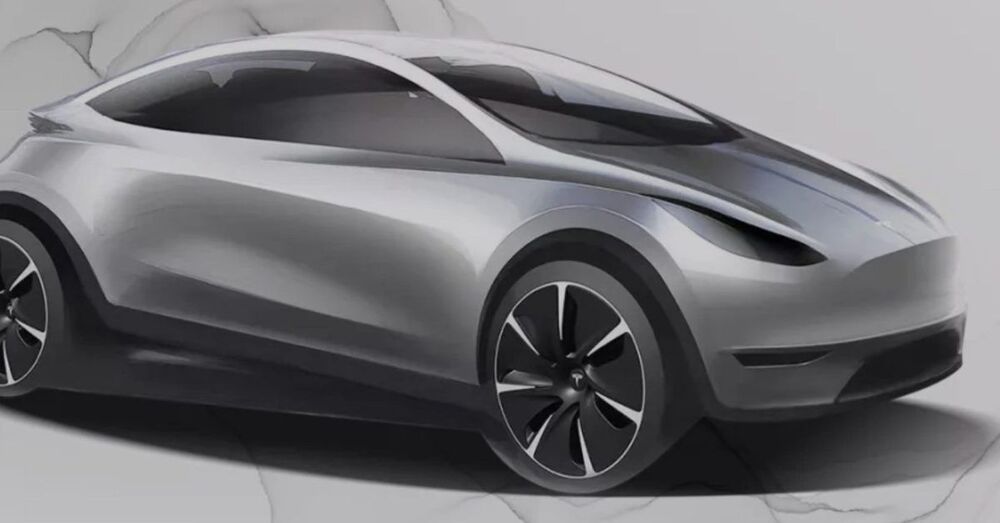Tesla’s recently announced $25000 electric car could be coming sooner than we thought, according to newly unveiled documents about Gigafactory Shanghai.



An update on the Green Run hot fire test for Artemis I, a commercial cargo spacecraft leaves the space station, and innovative ideas for exploring unexplored areas of the Moon … a few of the stories to tell you about – This Week at NASA!
Download Link: https://images.nasa.gov/details-An%20Update%20on%20the%20Gre…08,%202021
Producer: Andre Valentine.
Editor: Sonnet Apple.
Music: Universal Production Music
Ebikes may indeed require less pedalling effort than regular bicycles, but most still offer little in the way of cargo capacity or protection from the elements. The CityQ is designed to provide both, along with four-wheeled stability.
Created by Norwegian company CityQ AS, the vehicle is pedalled like a bike, with a 250-watt motor augmenting the rider’s pedalling power. However, the pedals aren’t directly linked to the drivetrain. Instead, the CityQ features what is simply described as “a software-managed drivetrain – like you find in electric cars.”
We’re still waiting to hear back about what that entails, although we suspect it may be something like the setup utilized in the Mando Footloose ebike – it uses an alternator to convert the rider’s pedalling power into electricity, which is stored in a battery that powers the motor.

Scientists have figured out a cheaper, more efficient way to conduct a chemical reaction at the heart of many biological processes, which may lead to better ways to create biofuels from plants.
Scientists around the world have been trying for years to create biofuels and other bioproducts more cheaply; this study, published today in the journal Scientific Reports, suggests that it is possible to do so.
“The process of converting sugar to alcohol has to be very efficient if you want to have the end product be competitive with fossil fuels,” said Venkat Gopalan, a senior author on the paper and professor of chemistry and biochemistry at The Ohio State University. “The process of how to do that is well-established, but the cost makes it not competitive, even with significant government subsidies. This new development is likely to help lower the cost.”
This mechanism reduces friction and makes cycling more efficient.
CeramicSpeed has unveiled a prototype of a chainless bike. The company claims that its drivetrain creates 49% less friction comparing to traditional chain and derailleur drivetrains.


Understanding the dynamics of granular materials—such as sand flowing through an hourglass or salt pouring through a shaker—is a major unsolved problem in physics. A new paper describes a pattern for how record-sized “shaking” events affect the dynamics of a granular material as it moves from an excited to a relaxed state, adding to the evidence that a unifying theory underlies this behavior.
The Proceedings of the National Academy of Sciences (PNAS) published the work by Stefan Boettcher, an Emory theoretical physicist, and Paula Gago, an expert in modeling the statistical mechanics of granular matter in the Department of Earth Science and Engineering at the Imperial College of London.
“Our work marks another small step forward to describing the behavior of granular materials in a uniform way,” says Boettcher, professor and chair of Emory’s Department of Physics.


A scalpel-free alternative to brain surgery has the potential to benefit people with Parkinson’s disease symptoms that are much more severe on one side of the body, new research suggests.
More testing is needed, but the approach, which uses a technology called focused ultrasound, could offer a new option for patients whose symptoms are poorly controlled by medications and those who cannot or do not wish to undergo traditional brain surgery.
“This small brain region, the subthalamic nucleus, had a very strong and potent effect on parkinsonian symptoms when we targeted it with precise, focused ultrasound energy,” said researcher Jeff Elias, MD, a neurosurgeon at UVA Health and a pioneer in the field of focused ultrasound. “The key for the ultimate adoption of this new procedure will be further refinements of the technology to ensure reliability and safety.”